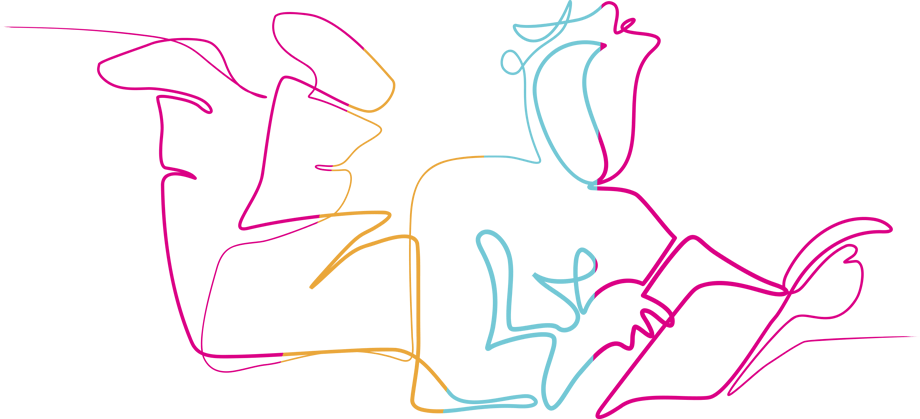How libraries can support blind and partially sighted communities
At The Reading Agency, we believe learning directly from people’s lived experiences creates inclusive and accessible programmes. With funding from the Ulverscroft Foundation, we partnered with Vision Norfolk to run co-production groups with blind and partially sighted participants to support Reading Friends – our reading connection programme. These sessions gave us valuable insights on their experiences with reading and libraries. Here’s what we learned – and different ways libraries might apply these insights as part of Reading Friends group activities and more widely.

Confidence
Loss of confidence
I’ve lost confidence since losing my sight.
The sessions highlighted the physical, emotional, and social challenges blind and partially sighted people face every day, which also impacts their reading activities. Whether navigating physical spaces, accessing reading materials, or engaging in conversations, confidence – and loss of confidence – was a recurring theme.
How libraries can help:
- Offer staff training so they feel confident supporting people who are blind and partially sighted.
Wayfinding challenges
[The] biggest thing of all is how you’re going to get there…
Participants discussed barriers accessing library locations due to distance, travel options, opening hours, and closures.
How libraries can help:
- Hold sessions in easy-to-reach, accessible venues, preferably with ground-floor meeting spaces.
Welcoming library spaces
The library is a huge open space.
Participants faced barriers when accessing libraries, from unfamiliar layouts to unclear signage. Some found large libraries daunting due to open-plan designs.
How libraries can help:
- Offer library induction sessions tailored to people who are blind and partially sighted to build confidence with the space and familiarity with staff.
- Provide staff or volunteer greeters in large, open-plan spaces or shared buildings to greet and guide attendees to the right room. If this isn’t possible, check whether your signage is clear and useful.
- Keep the same room layout and seating arrangements, if possible.

Accessibility
Communication
People might be nervous to step outside what they’re familiar with.
Participants learnt about activities through email mailing lists, local radio, talking newspapers, and word of mouth, highlighting how important it is to reach people through familiar, accessible channels.
How libraries can help:
- Use email mailing lists, local radio, talking newspapers/magazines, and word of mouth through staff, volunteers, and community partners such as Eye Care Liaison Officers (ECLOs) or local sight loss organisations.
- Clearly state activity details, including a description of the activity, location, date, time, and both a contact phone number and email.
Inclusive groups
I’m more talkative and make friends when I feel comfortable, but I don’t talk much outside of that, when I’m outside my comfort zone.
To help all participants feel confident and comfortable enough in group setting, it is important facilitators create a welcoming and inclusive space and check people’s accessibility needs.
How libraries can help:
- Ensure everyone can hear by checking audio levels at the start of sessions.
- Begin discussions with names to help participants recognise each other’s names and voices.
- Use directional cues (e.g., sitting to my left) and participant names. This can help with voice recognition and familiarity.
Technology
I only lost my sight a year ago. It feels like a barrier to me. I want to get through that. I’m on the fringe of learning a new way of reading.
Not everyone felt confident in, or had awareness of, the different types of accessible formats or devices that can support reading. Peer-to-peer support emerged as a valuable entry point into learning how technology can be used to support people with sight loss.
How libraries can help:
- Work with digital champions, local sight loss charities, or RNIB Technology Leads to support people and provide staff training.
- Host or facilitate technology-focused discussions, where a specialist or group members share insights on accessible reading technology.
- Signpost to offline and online reading technology, including audio CDs, MP3, USB or DAISY players, digital apps, and library apps like Libby and BorrowBox.

Connection
Social reading
There’s something special about being read to.
Many participants found joy and a sense of connection in shared reading, reminiscing about childhood or finding comfort in shared listening experiences.
How libraries can help:
- Use live readings or listen to audiobook excerpts through a speaker in group sessions.
- Include discussion of audiobook narrators alongside conversations about authors, genres, and themes.
- When reading aloud, focus on tone, pace, expression, and pronunciation.
Shared experiences
Meeting people with sight loss, it’s just so liberating to not overcome that first hurdle of needing to ‘explain’ one’s experience.
Participants highlighted how meaningful it is to connect with others who share similar experiences.
How libraries can help:
- Run dedicated groups for blind and partially sighted people to connect with others who have similar experiences.
- Hold space for participants to share their personal experiences of sight loss if they choose to, without assumptions being made about their experiences or vision levels.
Reading choice
I now rely more on recommendations and sticking with the same author.
Audio was the preferred format for people with a vision impairment – whether through audiobooks, Talking Newspapers, or smart assistants like Alexa. However, some participants found browsing reading material challenging, and felt that audiobook previews might improve their experience.
How libraries can help:
- Use stories that are available in e-audio or other accessible formats.
- Read summaries, blurbs or extracts together as a group to help people choose what to read.
- Where possible, offer a broad collection of e-audiobooks with multiple licences for popular titles.
Final Thoughts
The insights highlight the importance of confidence, accessibility and connection – elements that every library service can foster. “I’m so hungry for technology, finding new ways to read and learning where and how to open that door,” said one participant, highlighting the eagerness to embrace new solutions.
Read the full report or contact us about this area of our work at [email protected]
